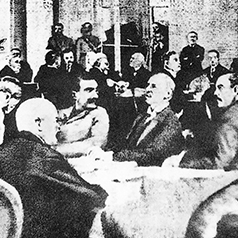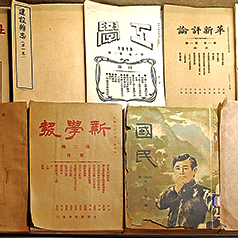
New Culture Movement and May 4th Movement (1915-1923)
The May Fourth Movement: an Overview
The New Culture Movement and the May Fourth Nationalist Movement were both events that unfurled in the early years of the Republic of China. Closely related, the two events were similar in some ways and different in others. The New Culture Movement, which took place in 1915, advocated democracy and science and denounced traditional culture. The May Fourth Movement, on the other hand, was a student-led patriotic movement sparked by China's diplomatic failure at the Paris Peace Conference in 1919. Both movements had far-reaching impacts still felt to this day.
The May Fourth Movement: an Overview
The New Culture Movement and the May Fourth Nationalist Movement were both events that unfurled in the early years of the Republic of China. Closely related, the two events were similar in some ways and different in others. The New Culture Movement, which took place in 1915, advocated democracy and science and denounced traditional culture. The May Fourth Movement, on the other hand, was a student-led patriotic movement sparked by China's diplomatic failure at the Paris Peace Conference in 1919. Both movements had far-reaching impacts still felt to this day.
(1) Rise of the New Culture Movement
The early Republican period saw a growing trend towards anti-tradition, anti-Confucianism and anti-classical Chinese language that stood in direct opposition to the established culture. It gradually evolved into the New Culture Movement that called for cultural-intellectual and literary reform.
(2) China’s Diplomatic Failure at the Paris Peace Conference
At the end of the First World War, China attended the Paris Peace Conference held in 1919 as one of the allied victors, but suffered a major setback with the conference’s handling of the Twenty-One Demands and the Shandong Problem. When news of the outcome reached China, it sparked national fury.
(3) The May Fourth Nationalist Movement Erupted
When news of China’s diplomatic failure at the Paris Peace Conference reached China, it caused national fury. In the afternoon of May 4, over 3,000 students gathered to protest in Tian’anmen Square, marking the start of the May Fourth Movement.
(4) A New Cultural-Intellectual Outlook
Although the May Fourth Movement had ended, the New Culture Movement continued to influence the Chinese people on a more fundamental level. Chinese society was brimming with fresh ideas as in the era of the Spring and Autumn and Warring States periods when hundred schools of thought flourished.
(5) The Diligent Work, Frugal Study Movement
The May Fourth Movement and the New Culture Movement fueled a new trend of studying abroad. More Chinese students studied in France and Germany while working on the side to support their tuition and living expenses. The newly founded Soviet Union also became a popular study-abroad destination. Many of those who returned later became key members of the Chinese Communist Party.








